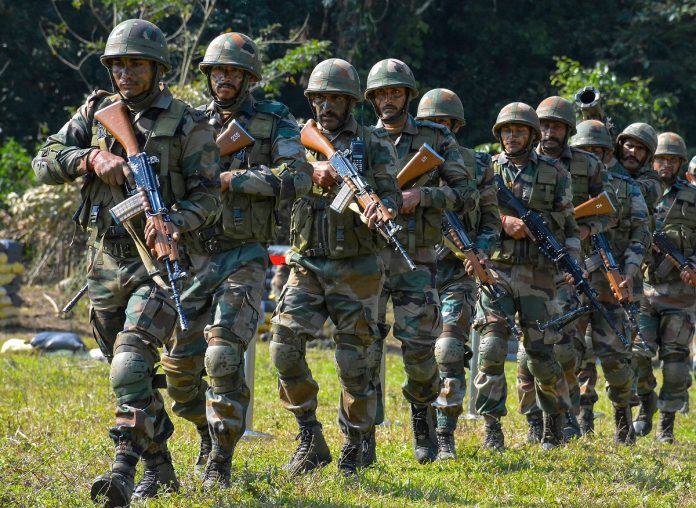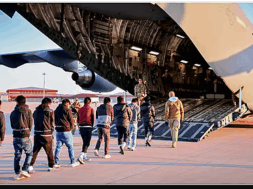
Manas Dasgupta
NEW DELHI, Sep 8: In yet another move to grab Indian territory, the Peoples’ Liberation Army of China carried out “aggressive manoeuvres” in one of the forward positions along the Line of Actual Control in Eastern Ladakh late on Monday night but was thwarted by the Indian army.
According to an official spokesman of the defence ministry, the Indian army at no point crossed the LAC despite great provocations by the Chinese army resorting to “firing a few shots in the air” in a bid to “intimidate our troops.”
Reiterating that India was committed to disengagement and de-escalating the situation in the LAC, the spokesman accused China of continuing to “undertake provocative activities to escalate.” But at no stage “has the Indian army transgressed across the LAC or resorted to use of any aggressive means, including firing,” the spokesman said.
Giving an update of the situation along the LAC in the wake of the Chinese attempt to unilaterally change the LAC line last night, the spokesman said, “It is the PLA that has been blatantly violating agreements and carrying out aggressive manoeuvres, while engagement at military, diplomatic and political level is in progress.
“In the instant case on 07 September 2020, it was the PLA troops who were attempting to close-in with one of our forward positions along the LAC and when dissuaded by own troops, PLA troops fired a few rounds in the air in an attempt to intimidate own troops. However, despite the grave provocation, own troops exercised great restraint and behaved in a mature and responsible manner.”
Stressing that the Indian Army was committed to maintaining peace and tranquility, the spokesman said India was also “determined to protect national integrity and sovereignty at all costs.” Referring to the statement by China blaming India for the boiling situation on the LAC, he said the statement by the Western Theatre Command was only “an attempt to mislead their domestic and international audience.”
Coming close on the heels of the earlier unsuccessful bid by China on the night of August 29-30 to change the LAC in the south of Pangong Tso, the defence experts believe that the latest PLA aggression was aimed at “teaching the Indian Army a lesson” for using the Special Frontier Force, largely comprising Tibetans-in-exile, on the front line in the August 29-30 clash. What had upset Beijing the most was that the sacrifice of a Tibetan SFF JCO Nyima Tenzin in the battle on that night had become a rallying point for Tibetans all over the world and sparked a new life to the resistance against the Chinese occupation of the region. To make matters worse, the SFF proved its worth in high mountainous terrain. And the reported move by a ruling BJP bigwig attending Tenzin’s funeral had also given official sanction to the existence of the SFF as part of the Indian army.
However, the long term objective of China was believed to be to destabilize India by putting continuous pressure along the 3488 km-long LAC fully knowing its impact on the Indian polity. The move has its legacy in a previous security report submitted to the then Indian government in 2013. On August 12, 2013, Shyam Saran, a China expert and then Chairman of National Security Advisory Board, submitted a report to the Prime Minister’s Office that PLA had grabbed more than 640 square kilometres of land in Ladakh by first denying India patrolling rights, and then occupying the territory by advancing the perceived LAC. Saran mentioned that the loss of territory was in Depsang, Chumar and Pangong Tso and pointed out that after the April-May 2013 PLA incursions, Indian troops could not patrol four points (10 to 13) in Depsang Bulge. The Saran report said PLA had built a road to Raki nullah in the Depsang plains, and taken 70 km of territory in Pangong Tso over the previous months. This left the present Narendra Modi government with no option but to militarily contest the PLA nibbling of the LAC.
Not only on the LAC, the latest PLA aggression made India facing a triple whammy from China. First, its economy had shrunk 23 per cent in first quarter due to the coronavirus pandemic that originated in Wuhan, China. Second, the economic cost of putting the Indian Army, Navy and Air Force on war-like alert with emergency purchases was significant and mounting each day. It was evident that the Chinese economy might be able to afford this deployment but it might prove to be too taxing on India and Beijing would like to tire out the Indian Army and bleed India economically till such time it agreed with India to restore the status quo ante in Ladakh since the PLA was expert in tiring out the enemy since the Korean war.
The third whammy India facing from China was its use of its all-weather ally Pakistan to provoke India on the Line of Control (LOC) through cross-border firing and terrorist infiltration. “Had it not been for umbilical ties between India and the Nepalese army, Beijing may have well been successful in activating a fourth dimension to bleed India,” the defence experts point out.
While India was enjoying active support from the United States, Australia and Japan in confronting against China, it would feel more military pressure in Ladakh should the US position change after the country’s presidential elections in November. Europe was still not alive to the rise of China which had close economic ties with EU powerhouse Germany. But should India tide over the present Chinese challenge, it would not be long before it emerged as a major power in the region both economically and militarily, the experts believe.













